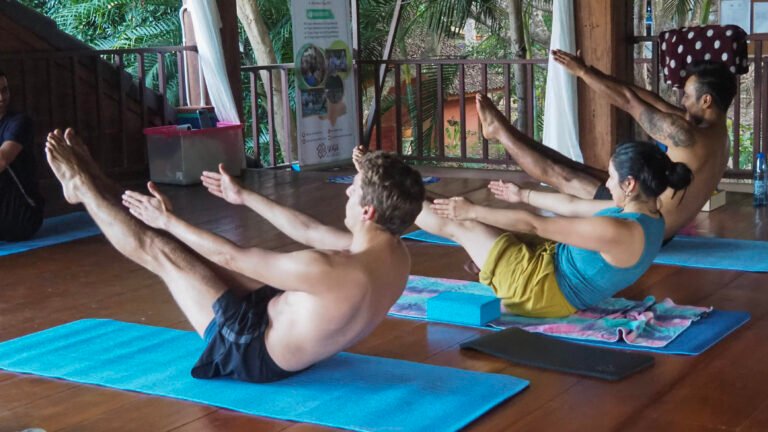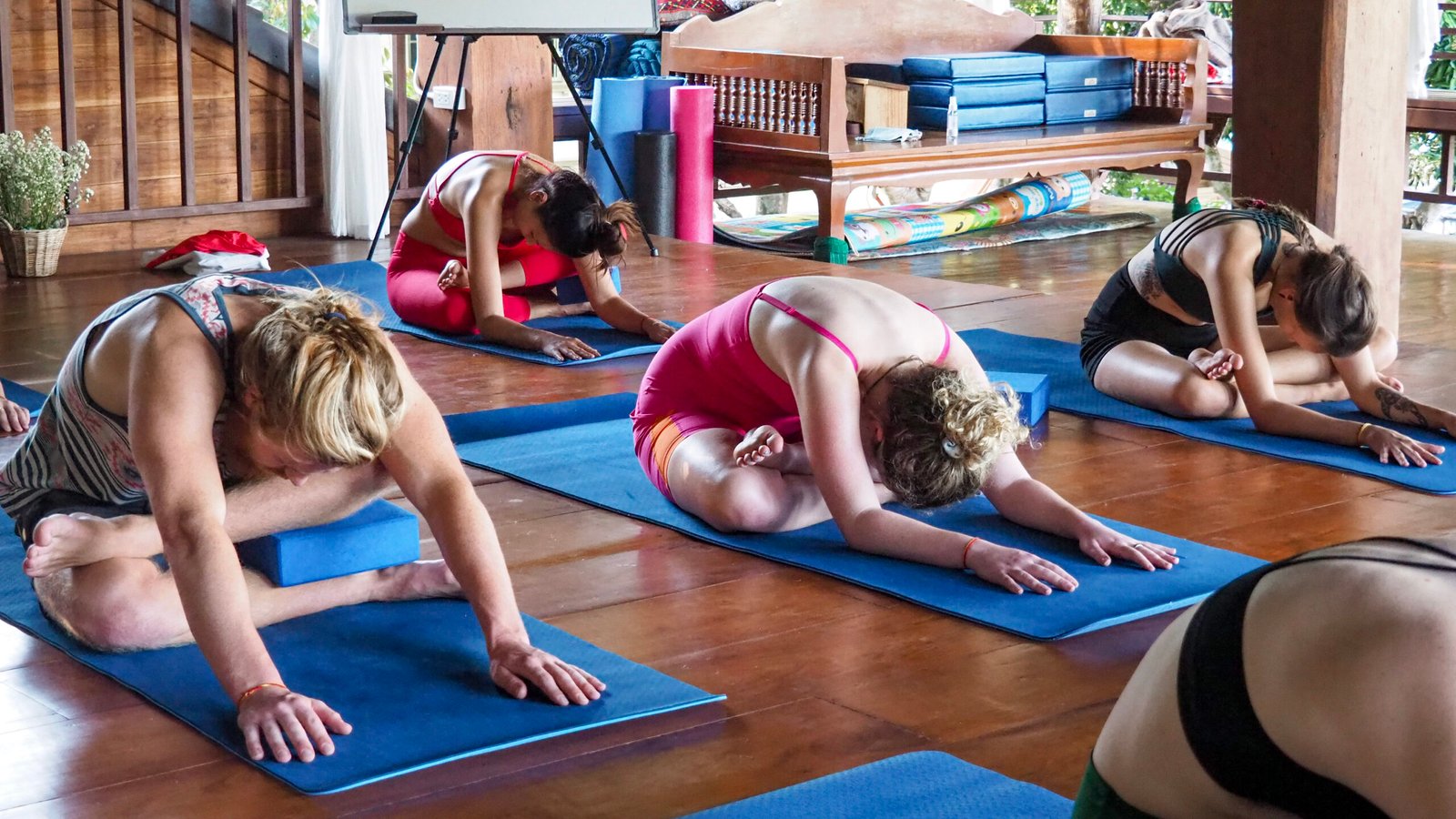Welcome aboard to a journey that promises to strengthen both your body and mind! If you’re seeking a pose that embodies balance, strength, and tranquility all in one fluid motion, then look no further than Navasana—the revered Boat Pose. Often seen as a rite of passage in yoga practice, this dynamic posture not only challenges your core but also cultivates resilience and focus. Whether you’re a seasoned yogi or just dipping your toes into the world of wellness, join us as we explore the myriad benefits of Navasana—from sculpting those abs to steering your mental ship towards clarity and calmness. Prepare to set sail on an enlightening voyage where physical prowess meets mental fortitude!
Introduction to Navasana (Boat Pose)
Navasana, commonly known as Boat Pose, is more than just a striking shape you can strike on your yoga mat. It’s a powerful pose that engages both the body and mind in unique ways. Whether you’re looking to boost your physical strength or enhance your mental focus, Navasana offers an array of benefits that can transform your overall practice.
As you balance on your sitting bones with legs lifted and arms extended, this pose challenges you to find stability amidst instability. It’s not just about core strength; it’s about cultivating resilience and clarity in thought. Dive deeper into the world of Boat Pose as we explore its history, proper techniques, and the remarkable benefits it brings to practitioners at every level!
The History and Meaning of Navasana in Yoga
Navasana, commonly known as Boat Pose, has roots deeply embedded in ancient yoga traditions. This pose symbolizes the journey of life, often likened to navigating through rough waters. The balance required in Navasana reflects how one must find stability amidst life’s challenges.
Historically, yogic texts emphasize the importance of strength and focus. Practitioners believed that achieving this pose not only enhanced physical prowess but also cultivated mental clarity.
The term “Nava” translates to boat in Sanskrit, while “asana” means posture or seat. Together, they create a powerful representation of resilience and determination.
As individuals hold the pose, they awaken their core strength and inner resolve. This connection between body and mind is at the essence of yoga practice—one that encourages growth both on and off the mat.
How to Perform Navasana Properly
To perform Navasana, start by sitting on your yoga mat with your legs extended straight in front of you. Engage your core muscles from the beginning to create stability.
Bend your knees and place your feet flat on the mat. Lean back slightly while maintaining a straight spine, keeping your chest lifted.
Now, lift your feet off the ground until your shins are parallel to the floor. If you’re feeling strong, extend both legs fully so that they form a V shape with your torso.
Stretch out through the arms, reaching them parallel to the floor alongside your legs. Keep breathing steadily and focus on balancing without collapsing into tension.
Hold this position for several breaths, finding stillness amidst the challenge. If it feels too intense, don’t hesitate to modify by bending one knee or lowering a leg as needed for comfort and control.
Physical Benefits of Navasana: Strengthening and Toning the Body
Navasana, also known as the Boat Pose, is a powerful and challenging yoga posture that offers numerous physical benefits. In this section, we will delve deeper into how practicing Navasana can strengthen and tone your body.
1. Builds Core Strength:
One of the primary physical benefits of Navasana is its ability to strengthen the core muscles. The pose engages not just the superficial abdominal muscles but also the deep core muscles such as transverse abdominis, obliques, and rectus abdominis. These muscles work together to create stability in the spine and support proper posture. Regular practice of Navasana can help you develop a strong and toned core.
2. Tones the Abdominal Muscles:
The boat pose specifically targets the rectus abdominis or “six-pack” muscle, helping to tone and define it. This is because in Navasana, you are contracting this muscle while holding your legs up off the ground. As you hold this pose for longer durations, you will notice an increase in strength and definition in your abs.
3. Strengthens Hip Flexors:
Another group of muscles that get strengthened by practicing Navasana are hip flexors – a group of muscles responsible for lifting your legs towards your torso when bending at the waist. Weak hip flexors can lead to lower back pain and poor posture. By regularly including Navasana in your yoga routine, you can strengthen these muscles which will improve your posture and prevent any back issues.
4. Improves Balance:
Balancing on your sitting bones while keeping both legs elevated requires control over multiple muscle groups, making it an excellent exercise for improving balance. Regularly practicing Navasana will not only make you more stable on your mat but also in daily activities such as walking or standing for long periods.
5. Tones Leg Muscles:
While most people associate leg strengthening with standing poses like Warrior II or Tree Pose, Navasana is also an effective way to tone the leg muscles. In this pose, your quadriceps are engaged as they work to keep your legs lifted and straight. Additionally, your inner thigh muscles also get activated, helping to create a more balanced and toned lower body.
Incorporating Navasana into your yoga practice can offer a plethora of physical benefits such as building core strength, toning abdominal and leg muscles, improving balance, and strengthening hip flexors. These benefits not only enhance your physical appearance but also contribute to overall health and well-being.
Mental Benefits of Navasana: Building Focus and Confidence
Navasana, or Boat Pose, is more than just a physical challenge. It’s a mental workout that cultivates focus and enhances confidence.
Holding this pose requires intense concentration. As you balance on your sit bones, all distractions fade away. This focused attention sharpens your mind, making everyday tasks feel less daunting.
The act of sustaining Navasana also fosters resilience. Each time you find stability in the pose, you build trust in yourself and your abilities. This newfound self-assurance translates beyond the mat into daily life challenges.
Moreover, engaging with your breath while holding the position encourages mindfulness. You learn to stay present amidst discomfort—an invaluable skill for navigating stress outside yoga practice.
Ultimately, each session spent mastering Boat Pose strengthens not only your core but also serves as a reminder of how capable you truly are.
Modifications and Variations of Navasana for Different Levels
Modifications make Navasana accessible for everyone. Beginners can start with a simpler version by bending the knees and keeping the feet on the ground. This provides stability while still engaging core muscles.
As strength develops, try lifting one leg at a time while maintaining that bent knee position. This gradual progression builds confidence without overwhelming your body.
More advanced practitioners can explore different variations like full Boat Pose, where both legs are lifted straight up. You might also experiment with extending arms overhead to enhance balance and intensity.
For those seeking extra challenge, consider adding twists or transitioning into other poses after holding Navasana. Each variation offers unique benefits while allowing you to tailor your practice according to your skill level and comfort zone.
Incorporating Navasana into Your Yoga Practice: Tips and Tricks
Incorporating Navasana into your yoga practice can elevate both your physical and mental strength. Start by finding a comfortable space where you feel grounded.
Begin with gentle stretches to warm up your core muscles, as they play a significant role in holding the pose effectively. Child’s Pose or Downward Dog are excellent preps.
When you’re ready, focus on your breath. Inhale deeply as you raise your legs and torso simultaneously, forming that iconic boat shape. Maintaining steady breathing will help maintain balance.
If you’re struggling initially, consider using props like blocks under your knees for support or practicing near a wall for stability.
To deepen the experience, explore dynamic variations; alternate between Navasana and other poses to keep it engaging.
Practicing this pose consistently can build familiarity and confidence over time while enhancing overall body awareness during sessions.
Conclusion: The Powerful Effects of Navasana on Both Mind and Body
The practice of Navasana, also known as the Boat Pose, has been a staple in yoga and fitness routines for centuries. It is a challenging pose that requires both physical strength and mental focus, making it a powerful tool for overall health and well-being. In this final section, we will dive deeper into the powerful effects of Navasana on both mind and body.
Physically, Navasana is an excellent exercise for strengthening the core muscles. The abdominal muscles, hip flexors, and lower back are all engaged in this pose, leading to improved stability and balance. As these muscles become stronger through regular practice of Navasana, it can help alleviate back pain and improve posture. Additionally, Navasana can strengthen the spinal erectors which play a crucial role in maintaining good posture.
Navasana also works wonders for toning the entire body. As you hold your legs up in the air during this pose, you engage your quadriceps (thigh muscles), hamstrings (back thigh muscles), calves (lower leg muscles), glutes (buttocks) and even your arm muscles as they support your upper body. This leads to leaner limbs and increased muscle tone throughout the body.
Beyond its physical benefits, Navasana also has significant impacts on our mental well-being. As with most yoga poses, there is a strong mind-body connection involved in practicing Navasana. Holding this pose requires focus and concentration to maintain balance while engaging various muscle groups simultaneously. This focused concentration helps quieten the mind from external distractions and brings about a sense of calmness.
Moreover, as you challenge yourself physically by holding this intense pose for an extended period of time, it builds resilience not only in your physical body but also mentally. The ability to stay present without giving in to discomfort or distraction is a valuable skill that can be applied off the mat as well.
Navasana offers many powerful effects on both mind and body. It provides a challenging physical workout, strengthens the core muscles, and tones the entire body. Simultaneously, it also promotes mental focus, calmness, and resilience. Incorporating Navasana into your fitness routine or yoga practice can bring about significant improvements in your overall well-being. So why not give this pose a try and experience its amazing benefits for yourself? Remember to always listen to your body and modify as needed to avoid injury. Namaste!









